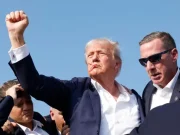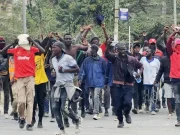President Nana Addo Dankwa Akufo-Addo on Sunday, April 19, 2020, announced the suspension of the partial lockdown imposed on the Greater Accra and Greater Kumasi Metropolitan Areas effective today, Monday.
The decision comes on the back of an upsurge in the number of Coronavirus cases recorded within the last few weeks.
The announcement has been met with mixed reactions. Whereas some people argue that the decision was premature, others think otherwise.
Partial lockdown announced
On March 27, 2020, the day the initial partial lockdown was announced, Ghana’s total confirmed COVID-19 cases stood at 137 with four deaths.
Only four out of the 16 regions, ie, the Greater Accra, Ashanti, Northern, and Upper West regions had recorded cases of the disease. at that time.
President Akufo-Addo, while announcing the decision to lock down these areas said the reason was to “contain and halt the spread of the virus within our country, especially in Accra, Tema, Kasoa and Kumasi, which have been identified by the Ghana Health Service as the ‘hotspots’ of the infections.”
Lockdown lifted as cases hit 1,042
On April 19, 2020, the day the lockdown was lifted, Ghana’s total confirmed COVID-19 cases stand at 1,042 with 9 deaths.
The virus has also penetrated more regions. So far ten regions out of the 16 have confirmed such cases.
The government attributed the sudden increase in confirmed cases of the novel coronavirus in Ghana to enhanced contact tracing and testing efforts by the government.
Other measures such as the mandatory quarantine systems have also helped to detect hidden COVID-19 cases in the country, the government explained.
Below are the reasons President Akufo-Addo gave for lifting the lockdown:
1. Ability to undertake aggressive contact tracing of infected persons
2. Enhancement of our capacity to test
3. Expansion in the numbers of our treatment and isolation centres
4. Our better understanding of the dynamism of the virus
5. Ramping up of our domestic capacity to produce our own personal protective equipment sanitisers and medicines
6. Modest successes chalked at containing the spread of the virus in Accra and Kumasi
7. The severe impact on the poor and vulnerable
WHO conditions for lifting restrictions
Meanwhile, the World Health Organization (WHO) last week set six conditions for lifting COVID-19-related restrictions.
The conditions are:
1. Disease transmission is under control
2. Health systems are able to “detect, test, isolate and treat every case and trace every contact”
3. Hot spot risks are minimized in vulnerable places, such as nursing homes
4. Schools, workplaces and other essential places have established preventive measures
5. The risk of importing new cases “can be managed”
6. Communities are fully educated, engaged and empowered to live under a new normal
Over 68,000 tests done so far
Ghana has become one of the first countries worldwide to ease restrictions on movement during the coronavirus pandemic.
About a total of 68,591 contacts traced to positive cases have been tested.
“Indeed, Ghana is the only other country in Africa to have conducted more than 60,000 tests, and we are ranked number one in Africa in administering of tests per one million people,” he affirmed.
Despite the lifting of the lockdown, Ghana’s borders will remain closed.
The ban on social gatherings of more than 25 persons is also still in place.







































